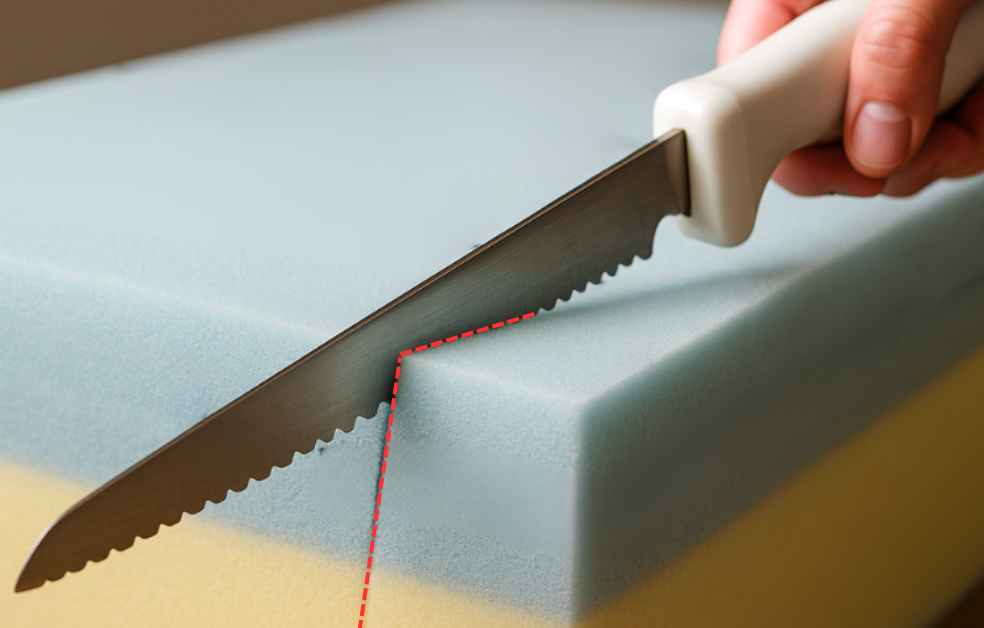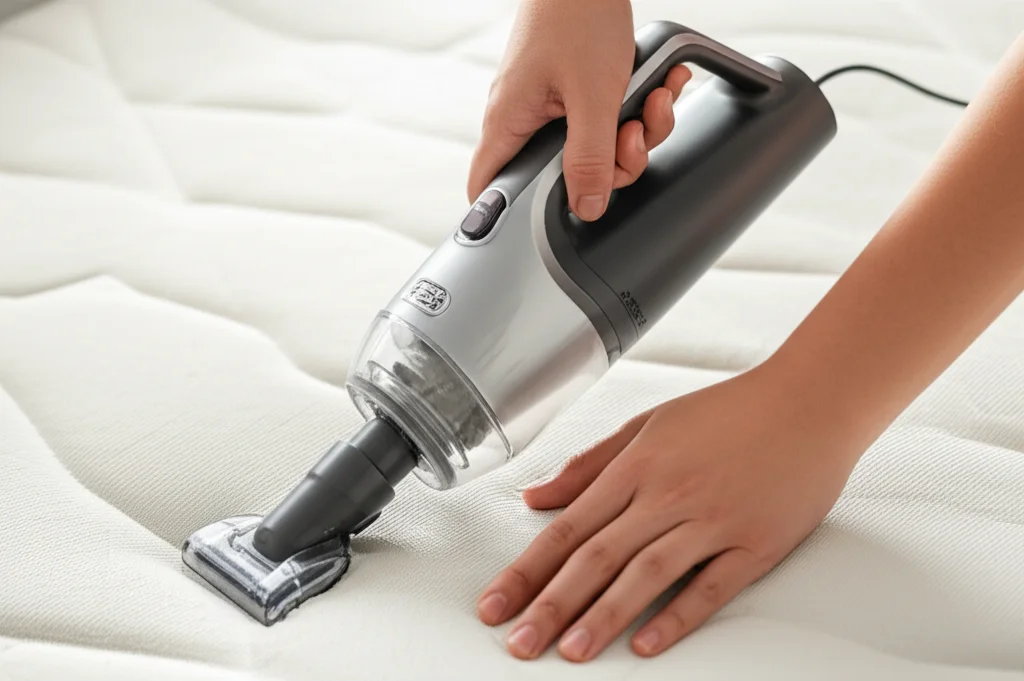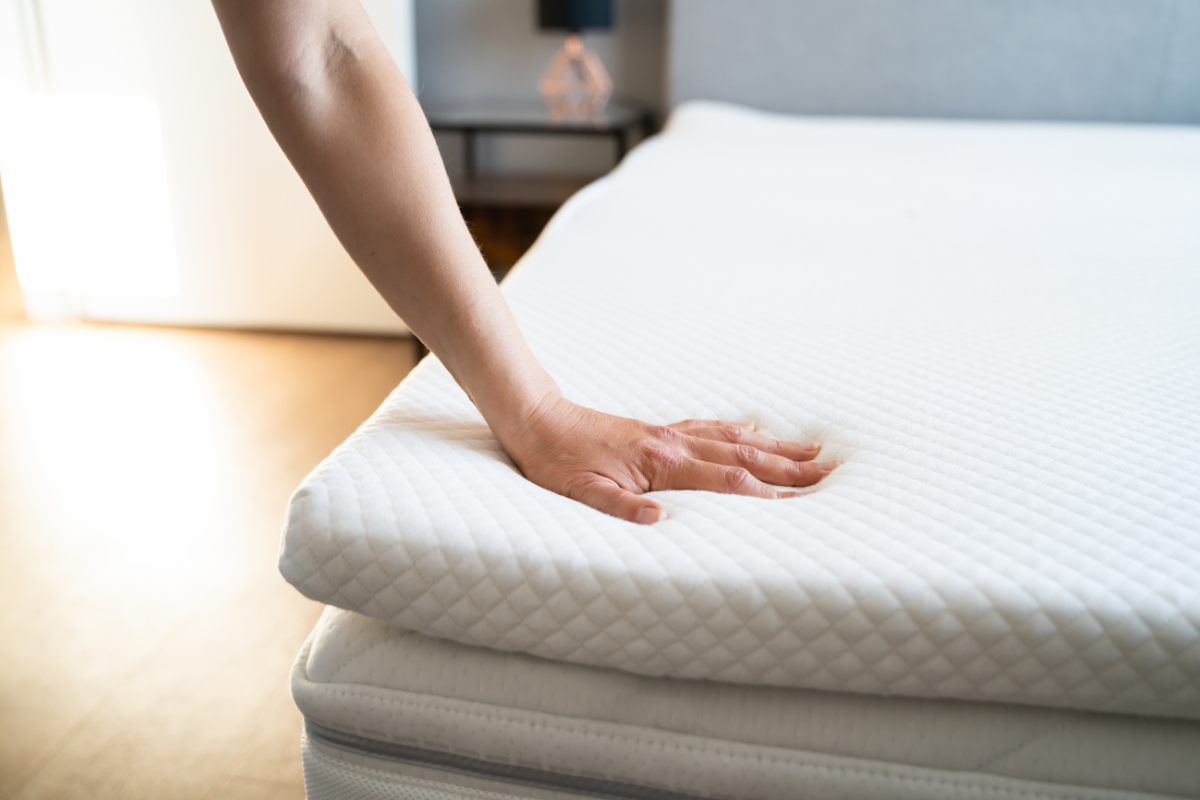
“A good night’s sleep begins with the right mattress but how long will that comfort last?”
That’s a question many buyers forget to ask until it’s too late!
If you’re investing in a memory foam mattress, understanding its lifespan can save you money and ensure your sleep quality stays top-notch.
Read Our Complete Guide to Memory Foam Mattress.
What is the Average Lifespan of a Memory Foam Mattress?
Most memory foam mattresses are expected to last anywhere from 7 to 10 years.
Let me be straight with you, I have seen both ends of the spectrum.
One of my clients had a no name mattress that sagged after just 3 years, while my own high density model lasted a good 11 before I even thought about replacing it.
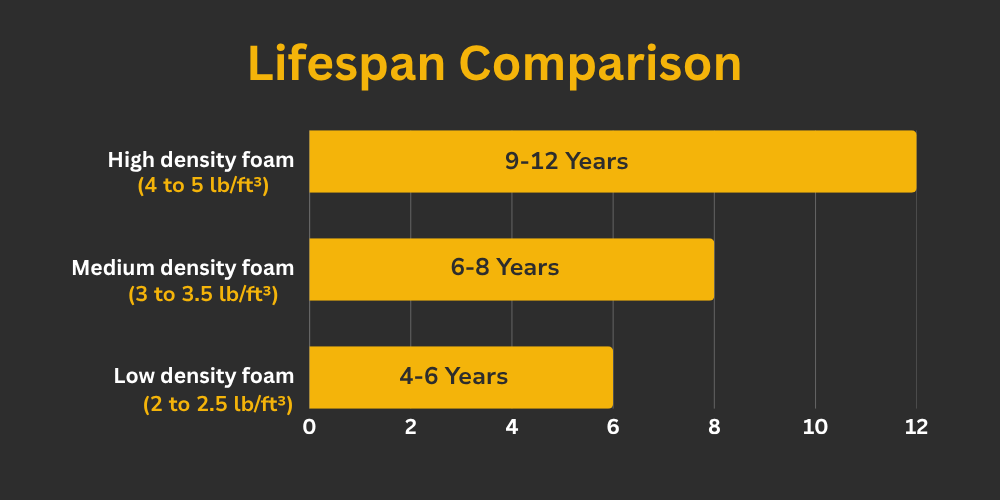
Let me give you a breakdown:
- Low density foam (2 to 2.5 lb/ft³)
Around 4 to 6 years before you start seeing body impressions and loss of support.
- Medium density foam (3 to 3.5 lb/ft³)
Typically lasts 6 to 8 years. This is your middle of the road option for budget and comfort.
- High density foam (4 to 5 lb/ft³)
Can last 9 to 12 years if properly maintained. This is what I recommend if you want a mattress that actually sticks around.
“According to Sleep Foundation tests, high-density memory foam
(over 4 lb/ft³) maintains structural integrity up to 40% longer than lower-density models.”
What are the factors that impact the Longetivity of a Memory Foam Mattress?
You would think a mattress just wears out with time, but honestly, it is how you treat it that makes all the difference.
We have tested dozens of memory foam models over the years, and the ones that went the distance always had a few things in common.
Let me walk you through what really affects how long does a memory foam mattress holds up:
- Foam Density and Quality
This is number one. Always. Cheap foam breaks down fast. I made the mistake early in my career of recommending a mattress solely based on comfort during the first lie down. Big mistake.
If the density is below 3 pounds per cubic foot, it is probably not going to last long. High density foam holds its shape and support better over time.
- Daily Usage
Then there’s how often it is used. Guest beds? They can last over a decade because they barely see any action. Daily use, especially in a shared bed with different sleeping styles, wears foam down much faster.
I always tell people, if it’s your main bed, invest like it’s your spine on the line. Because it is.
- Weight Distribution & Body Type
Weight distribution and body type are huge. A single sleeper who is 120 pounds won’t wear a mattress the same way a 220 pound couple will.That pressure adds up night after night.
Heavier folks or side sleepers tend to compress certain areas more, especially hips and shoulders, which leads to those dreaded sinkholes.
- Mattress Protection
If you are using a Mattress Protector or Topper, you are already ahead of the game. A good protector shields the foam from sweat, spills, and dust mites – all things that degrade the material faster.
I have seen mattresses last 3 to 4 years longer just because someone used a breathable protector and washed it regularly. Same with a quality topper. It acts like a buffer zone.
- Bed Base and Foundation
A saggy or broken base will mess up even the best memory foam. I had a client who thought her mattress was defective, but it turned out her slats were too far apart.
Foam needs consistent support. Solid platform bases or close slatted frames work best. Skip the box spring unless it is specifically designed for foam.
- Climate and Humidity
If you live in a humid area and you do not have a dehumidifier or airflow beneath the mattress, you are inviting mold. And mold eats foam. It’s seen beautiful mattresses ruined in coastal homes just because they were left to sit flat on the floor.
- Warranties and Certification
Warranties and certifications give you a quick hint at how long a mattress is built to last.
If the brand only offers a 5-year warranty, think twice. Aim for at least 10 years, with coverage for sagging.
Also, check for a CertiPUR-US® label. It means the foam meets standards for durability and safety.
A strong warranty and trusted certification usually mean the mattress is built to go the distance.
So yeah, lifespan is not just a countdown. It is a combination of choices, habits, and a bit of care. Do it right and your mattress will thank you every morning.
How to make your memory foam mattress last longer?
Alright, confession time: I ruined my first memory foam mattress within 2 years. Yep, I thought it was indestructible. Ate chips in bed, let my dog nap on it without a cover, never rotated it… big mistake.
Learned the hard way that even the best memory foam needs TLC to go the distance.
Here are some things to keep in mind:
1. Get a mattress protector.
Not the crinkly plastic kind the grandma used, but a breathable, waterproof one.
2. Rotate your mattress every 6 months.
I used to sleep like a starfish in the same spot every night and developed a weird dip on one side. Flipping won’t help (most memory foam isn’t double-sided), but rotating 180 degrees can prevent body impressions.
3. Keep it clean using mild methods.
Dab stains with mild detergent and let it air dry completely. Avoid harsh scrubbing or soaking. Foam is delicate. Avoid steam cleaning as it may take a long time to dry.
4. Don’t jump on it.
Sounds obvious, right? Do not treat it like a trampoline. Over time, that kills the internal structure.
5. Check the bed base
Slatted bases are fine, but make sure the slats aren’t too far apart.
6. Air it out occasionally.
Every couple months, strip the bed and let the mattress breathe for a few hours. It helps reduce moisture and odors.
Even with the best care, no mattress lasts forever. So how do you know when it’s finally time to say goodbye to your memory foam bed?
Common Signs Your Mattress Is Asking for a Change
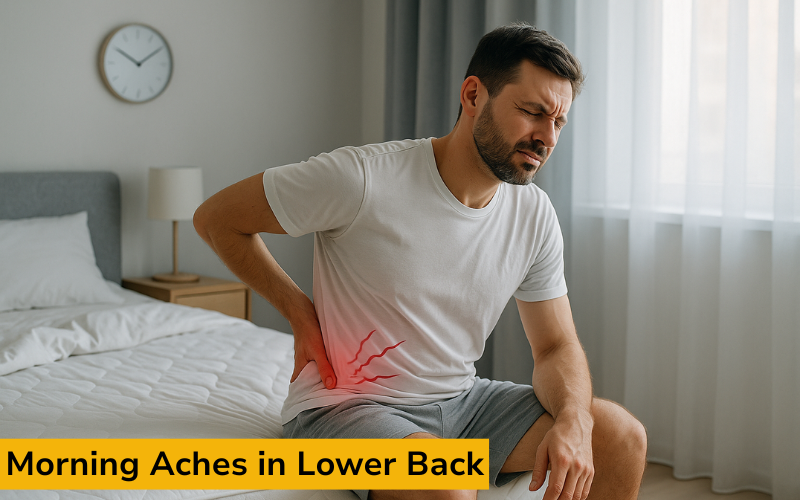
You do not always need to lie in a crater to realize it is time for a new mattress.
Below are some clear signs that your mattress might be hurting your sleep more than helping it:
- Permanent Sagging or Body Impressions: If you see a visible dip where you sleep and it doesn’t bounce back, your foam has probably lost its resilience.
- Morning Aches or Stiffness: Waking up sore, especially in the lower back or shoulders, often means your mattress no longer supports proper spinal alignment.
- Reduced Comfort or Support: If your mattress feels flatter, lumpier, or just not as cozy as it used to, it’s probably breaking down internally.
- Musty Odors, Mold, or Discoloration: Smells or spots mean moisture has gotten in, which memory foam does not handle well. Mold can be a health risk and is usually irreversible in foam.
- Age Over 8 to 10 Years: Even if there are no visible problems, most memory foam mattresses start deteriorating internally after this time frame.
Here is a simple checklist we use with clients:
- Do you wake up feeling stiff, sore, or more tired than when you went to bed?
- Can you see or feel obvious sagging or dips in the mattress?
- Is it over 8 years old?
- Are you tossing and turning more than you used to?
- Any signs of mold, discoloration, or lingering odors?
- Have you gained or lost significant weight, changing how the mattress supports you?
- Is your partner sleeping better on the couch?
If you nodded to more than a couple of those, it is probably time.
Why to invest in a new Mattress?
Your health and sleep quality matter.
Sleep affects everything – your focus, mood, immune system, even your weight.
I once had a client who kept blaming stress for his chronic fatigue, only to realize the real culprit was his cratered mattress. A week after switching, he felt like a new person. If your sleep isn’t restoring you, the bed may be part of the problem.
Cost-wise, replacement is often smarter than suffering.
You might hesitate to drop $800 or more on a new mattress, but when you spread that over 8 years of better sleep, it comes down to pennies per night.
And poor sleep? That costs way more in the long run – in productivity, in pain, even in doctor visits.
So don’t wait for the mattress to fall apart completely. If your body is giving you signals, listen. Sometimes, a new bed is not a luxury, it is a reset button for your life. And that, my friend, is worth every penny.
Final Thoughts

Shopping from trusted marketplaces like Amazon often gives you access to better deals, sleep trials, and easier returns.
If you’re not sure what suits your sleep needs best, take our quick Mattress Quiz for personalized guidance.

